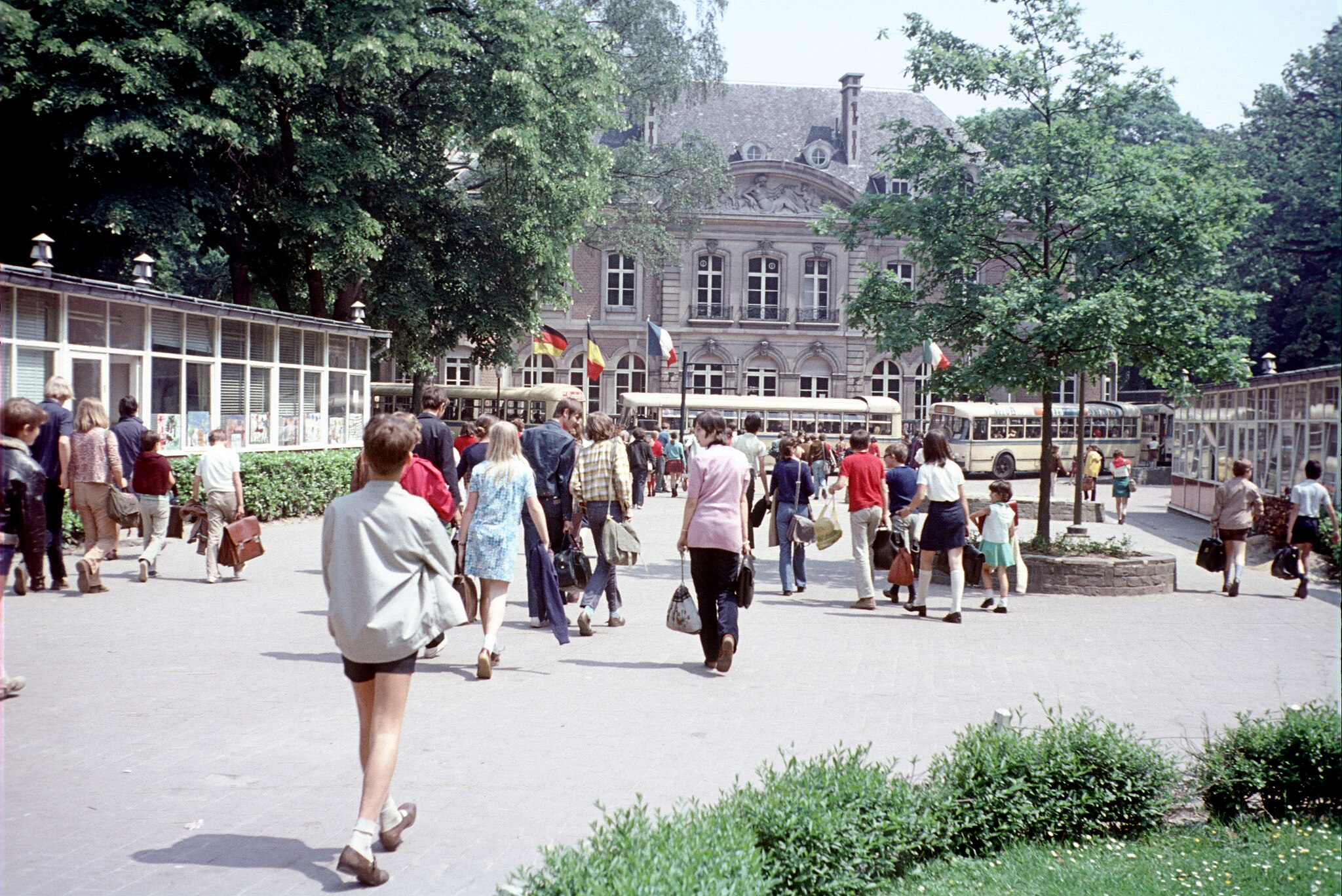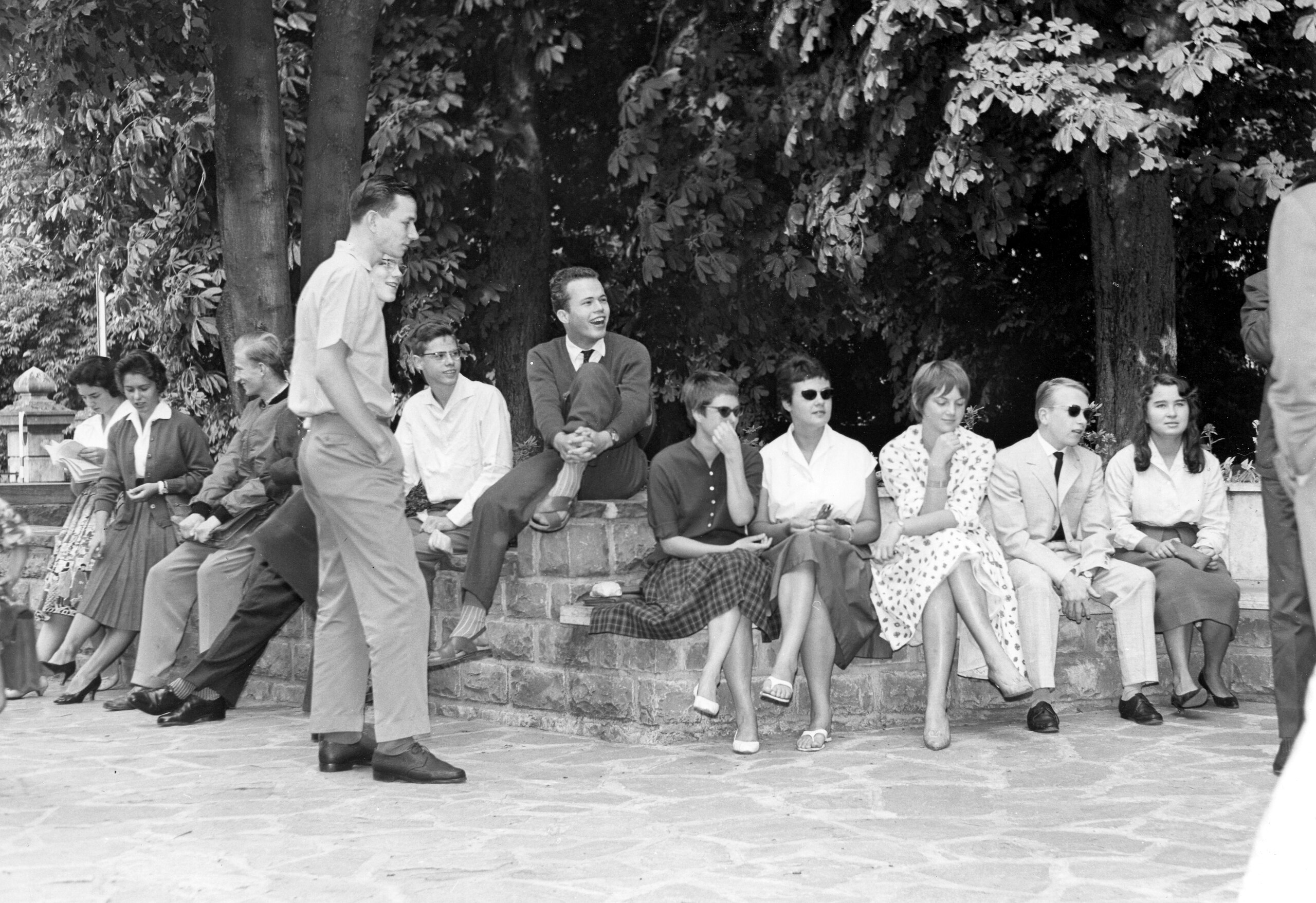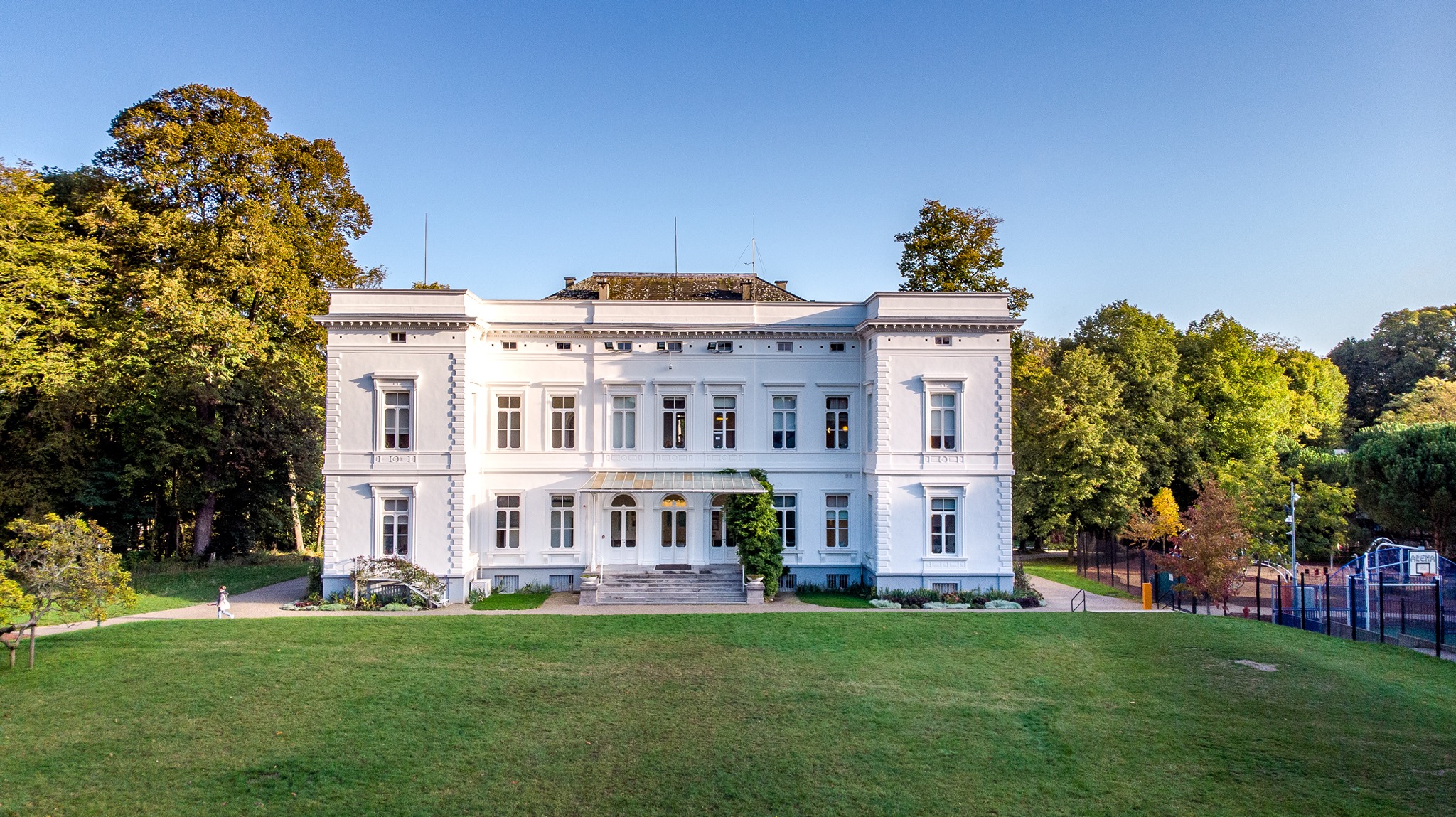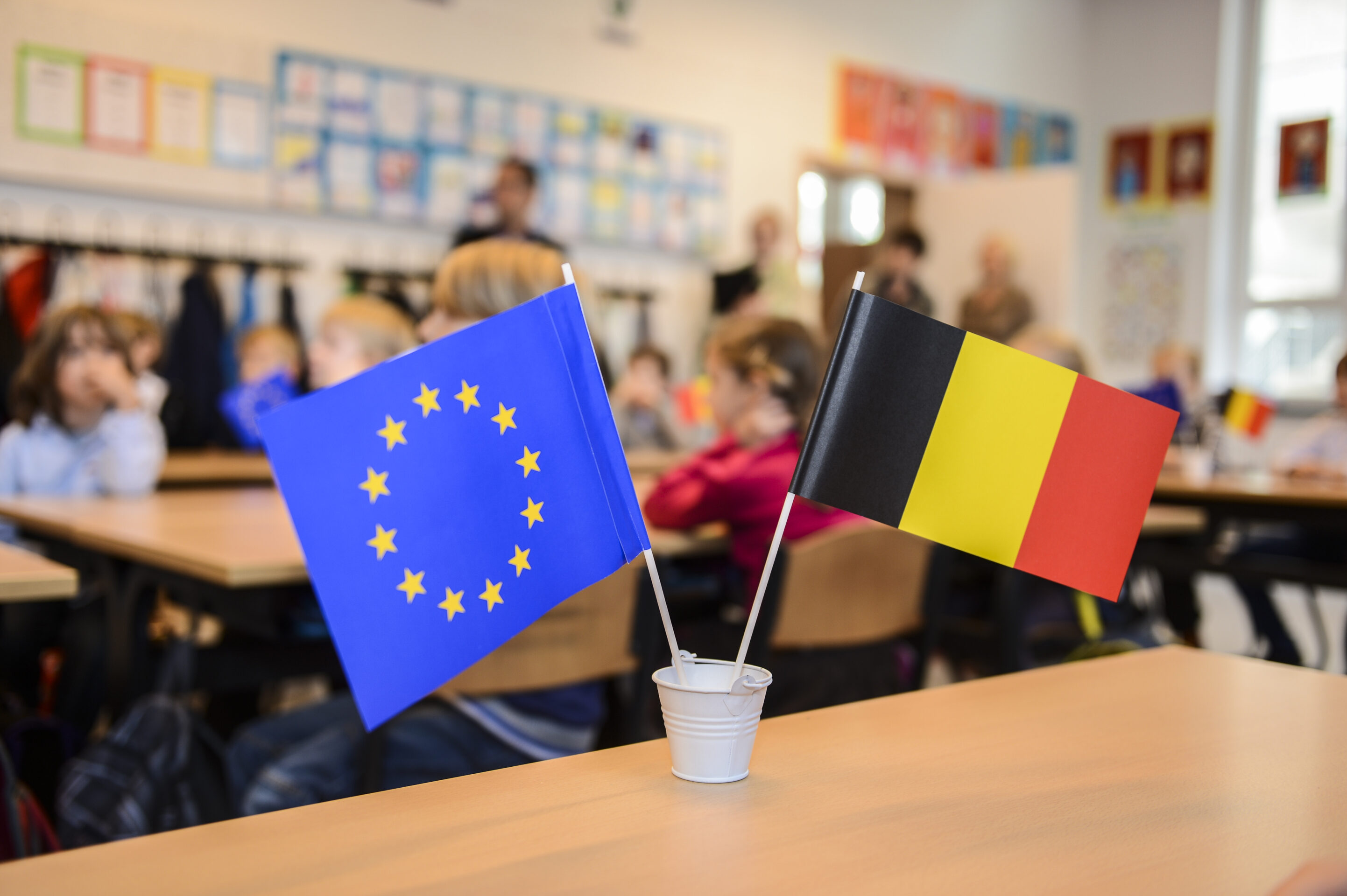Belgium is home to several education systems, with one for each language community (French, Dutch and German), as well as religious and secular establishments.
If this weren't enough, there are also the European and international schools – often thought to be linked or even the same. But these are in fact separate entities with major differences in how they function, their funding, and overarching mission. To understand how they work, The Brussels Times spoke to representatives of each system.
There are 34 international schools spread across four Belgian cities, according to the International Schools Database. 27 of these are in Brussels. They are independently-run private schools, with varying curricula, fees, facilities and programmes.
By contrast, European Schools are public and run as an intergovernmental organisation jointly by the European Union and the EU Member States. There are 13 across the bloc and five in Belgium (four in Brussels, one in Mol near Antwerp). In addition, the private Accredited European School in Brussels-Argenteuil follows the same curriculum but is independent from the EU in its organisation and financing.

European School Brussels 1 (EEB1) in 1971. Credit: Wikimedia Commons
The European Schools were founded on the initiative of parents working for the EU institutions, explains Secretary-General Andreas Beckmann. "In 1953, there was a need to attract EU staff to Luxembourg," he says. "Parents decided that a school was needed to teach their children in their mother tongue. This would mean the children could later return to their country of origin with a good language level."
This first school in Luxembourg counted just six teachers and 70 pupils. This has now grown into a network of 13 schools and 30,000 pupils – 15,000 of whom are in Brussels.
David Tran, Director of the European School Brussels 1 (EEB1), stresses how different the school created in 1953 was to other educational institutions: "The curriculum was innovative and completely new. But now the European Baccalaureate is officially recognised. You can study in almost any European language and in any European university."
European vs international curricula
The European Baccalaureate is unique to the European Schools and the teaching, syllabus and exams are identical across the board, regardless of which country the school is in. "What makes us different from other schools is that we try to get the best out of Europe. There is a European dimension. When we teach history, we don't talk about a Belgian history here in Brussels: it's European history," Beckmann explains.

Students during the first ever session of the European Baccalaureate at the European School of Luxembourg, June 1959. Credit: Wikimedia Commons
This is different to international schools, which are free to create their own curriculum. Most opt for the International Baccalaureate programme (IB), but this varies. BEPS International School in Ixelles offers the diploma programme (which includes six subjects, theory of knowledge, extended essay, CAS) and the slightly more applied careers programme (including DP subjects and BTEC from the UK).
ISB – one of Brussels' biggest international schools with 1,300 students (including Belgian royalty) – offers IB, AP, BTEC, and the high school diploma.
Montgomery International School, meanwhile, is smaller like BEPS (both have around 200 pupils) and focuses solely on the IB programme "We want to push our students to their best. Every student can pass the IB if we support them on their educational journey," notes Christel Laur, Montgomery's Head of Communications.
Language learning
A core difference between European and international schools is the language in which students are taught. While children at EU schools are taught in almost every official EU language, most international schools offer teaching solely in English.
"Our pupils are from different Member States and enter different language sections, depending on their dominant language," Beckmann explains. "You don't have a choice as a parent; you join the language section of your dominant language. In Brussels, we have sections for all EU languages, except Irish and Croatian as there is not sufficient demand yet."
The language sections are divided between the four Brussels schools, but English, French and German sections feature in every school. Some sections such as Italian, Spanish or Dutch are offered in multiple schools, but not all. Smaller language sections, such as Hungarian, Polish and Portuguese, are only offered in one. The biggest language section is French; the smallest (and newest) is Slovenian.
Pupils are taught in their dominant language but from the age of six start to learn a second, and then a third or fourth in secondary school. Some subjects – such as history, geography, art and music – are taught in the non-dominant languages. By the time the child leaves school, their second language will be at a C1 or C2 level (according to CEFR).
"It's not like the international schools where pupils learn languages in no specific context. In this case, they are studying subjects through these languages," the EEB1 Director, David Tran, says. In his school, there will be 12 language sections offered from this academic year. "That's half of Europe," Beckmann points out.

The International School of Brussels. Credit: ISB
For ISB, English is the main teaching language but a home language programme is also offered: one class a week in the five most widely-spoken languages in the school (Swedish, Hebrew, Japanese, Korean and Spanish).
Meanwhile, Montgomery offers both an English programme and bilingual programme (English and French). It is also the only school in Brussels to offer the advanced bilingual diploma. According to Laur, this makes a difference to university applications as it proves the student has a particularly high language level, unlike the regular IB diploma.
How are they funded?
Part of the European Commission's budget is allocated to the EU schools. Member States also second staff and pay the teachers' salaries. Outside Brussels, various agencies, the European Central Bank in Frankfurt, and the European Investment Bank in Luxembourg also provide funding.
European Schools are therefore free for EU staff. "It is an all-inclusive service for parents," Beckmann says. However, non-EU staff are charged school fees.
By contrast, international schools are private and source their funding from elsewhere. "Some of the international schools are owned by companies that run international schools around the world. Others are small businesses which have been locally established," says Tim Gill of BEPs, which is owned by a Swiss entrepreneur. "They own the building and have invested in the business of the school because they have a vision for education."
ISB is financed both privately and by parents' companies. Montgomery is part of the Ermitage Education Group, which includes other international schools in the Paris region and Aix-en-Provence. It was initially established as an école du jury in 2007 (a more flexible type of Belgian school for children with difficulties, which allows them to study and take exams separately), and switched to IB in 2015.
Strengths and shortcomings
Each school in Brussels has something unique to offer, but each has limitations as well. Smaller schools such as BEPS and Montgomery are equipped with fewer facilities and are limited in terms of infrastructure. But they also pride themselves on their "family feel", which is lost in larger schools.
"The atmosphere at BEPS is different to a big international school or European School. Parents come here for a small, more family-oriented atmosphere," Gill notes.
"We really emphasise the relationship and the connection between student and teacher. That's Montgomery's greatest strength," Laur says.
ISB boasts an "exceptional learning support department," says occupational therapist Louise Franklin. "We have many specialists who can offer a wide variety of services for students. Any student who has additional needs is well provided for; it is a well-rounded holistic experience."
Related News
- Registration, exams and quality: All you need to know about education in Belgium
- What happens on Wednesdays? Childcare in Brussels explained
- Does Belgium's high spend on education make for highly-educated children?
Both international and European Schools benefit from an extraordinarily diverse student population. "It's like you're touching the whole world," says Gill of BEPS, where around 50 different languages are spoken by students.
Plurilingualism is also a strength of the European Schools, as well as connecting pupils to their mother tongue and country of origin through their language section.
"We are preparing European citizens," Tran affirms. "We need to make them aware of the European dimension for the future and they need to be mixing and meeting each other from a young age." But Beckmann notes that French is by far the most dominant language in Brussels schools, so they are perhaps not as plurilingual as in other places in Europe.
Both Tran and Beckmann also acknowledge that the system is considerably overcrowded, with spaces remaining only in Mol (Antwerp). Plans for a fifth school in Brussels are underway, but this won't become a reality before 2030.
The European Schools are as diverse among teaching staff and management as they are among pupils. While this can pose challenges for staff shortages (Latvian science teachers are hard to come by), Beckmann concludes that it is "inspiring to work with people from such different educational backgrounds. Everybody has also slightly different approach when it comes to teaching and learning."

